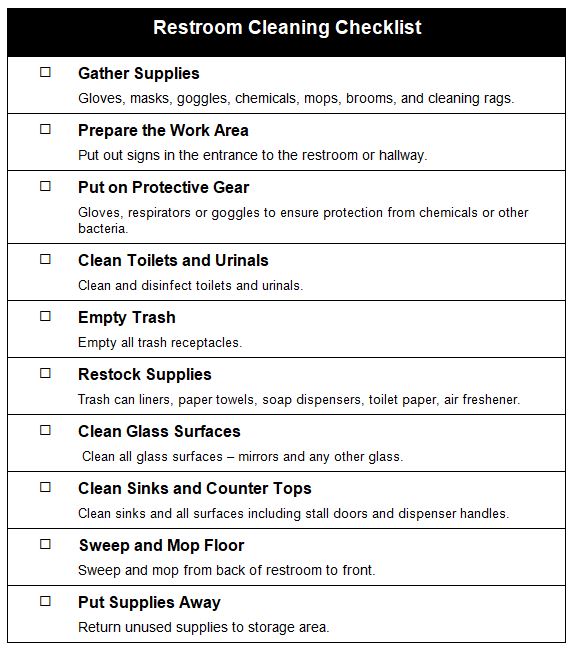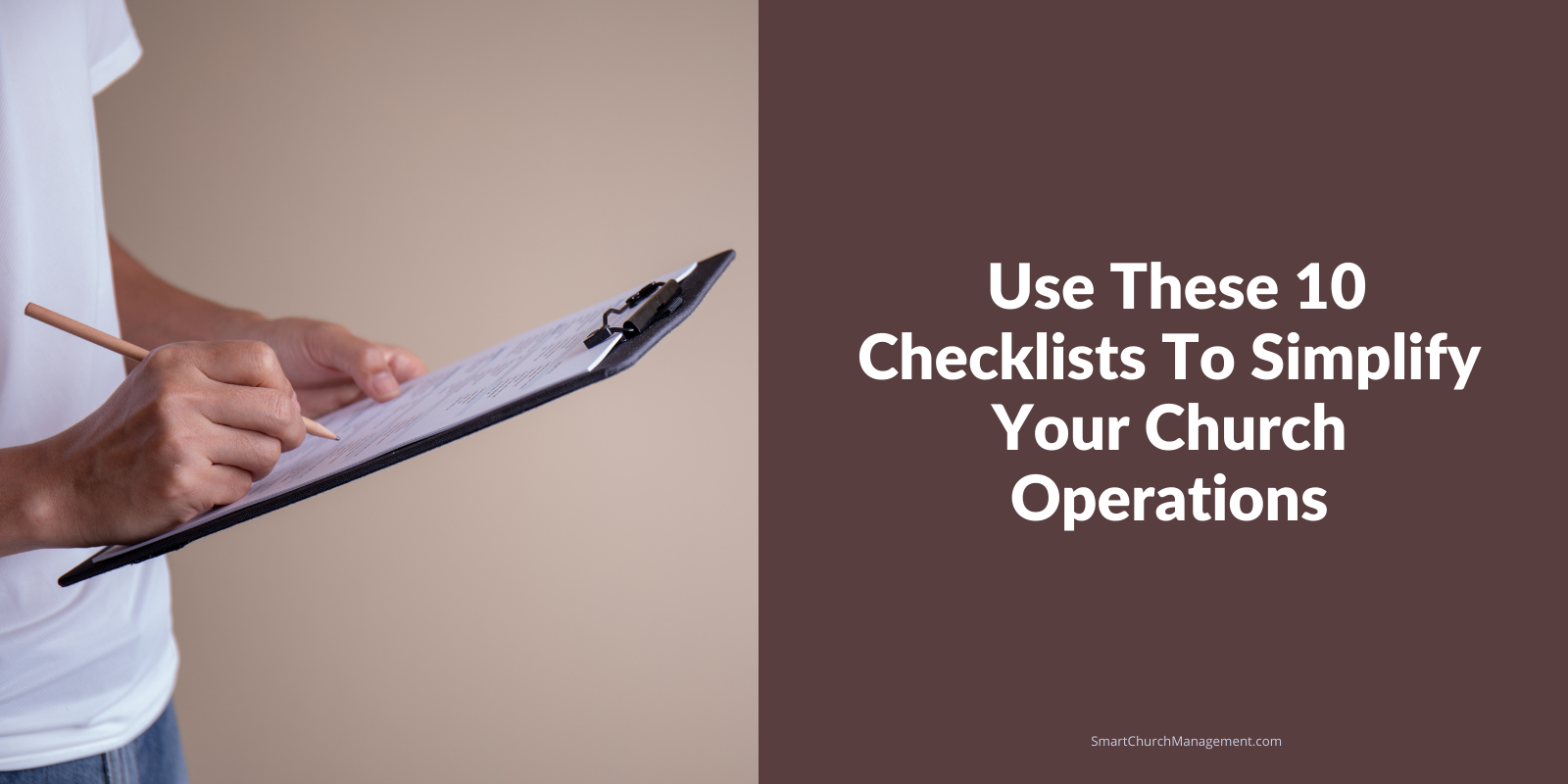Estimated reading time: 6 minutes
One of the many responsibilities of a church leader is managing employees and volunteers. This includes setting expectations and monitoring how work is completed. Checklists can help!
We’ve all had those awkward experiences when a step in a process was missed or an important task was forgotten.
This creates an uncomfortable and frustrating situation.
It isn’t easy to monitor job functions that require multiple steps or programs that are multifaceted, which is why many organizations use checklists.
A checklist is a tool that organizations use to ensure that all important actions or steps in a process have been taken.
Not to be confused with a check sheet, which is one of the seven quality tools, these checklists contain those steps or elements important to a process, situation, or event.
For example, when planning a church event, it’s helpful to have a checklist of all the logistical steps that need to be taken to prepare.
This list helps the event organizer keep track of those things that need to be done in preparation for the event.
People use checklists the same way they make a to-do list.
The difference is that the managers’ involvement in making the checklist ensures specific tasks are completed as assigned and on time.
There are many church jobs that could benefit from using a checklist.
The goal is to gather the information for each list and use it as a guide to steer consistent practice in various work areas.
10 Areas To Use a Checklist
1. Custodian
The COVID-19 pandemic has changed how churches clean and sanitize their campuses.
Church custodians have countless tasks that need to be completed on any given day. COVID sanitation has been added to a checklist that can help to make sure all jobs are done.
For example, some custodian tasks are only necessary weekly, monthly, or even quarterly.
Keep a checklist of what needs to be done (and how often) to ensure your custodian team doesn’t inadvertently forget an important sanitation task.

Tip: Keep a copy of this checklist on the custodian supply cart.
2. Receptionist
The church receptionist has many responsibilities. Within her job description, some things may need to be done daily or weekly.
Things like straightening the lobby, cleaning the coffee pot, and watering the plants are all tasks that could be added to a receptionist’s checklist.
Tip: Keep the checklist in sight so your receptionist has a clear visual of daily responsibilities.
3. Money Counters
Money counters are often volunteers.
This valuable free labor group should have a written list of tasks to do and information to track while handling church cash.
Use this checklist when training volunteers and keep a copy in the counter’s room as a reminder for working volunteers.
Tip: Add confidentiality to the checklist as a reminder for counters to maintain confidence with member contributions.
4. HR Application Process
There are many steps to the employee hiring process. The person responsible for that function should have a list of things that need to be done before an employee is brought on board.
For instance, background checks, reference checks, testing, and I-9 documentation are all things that could be included in the hiring process checklist.
Tip: Maintain a hiring checklist in employee files to ensure all steps have been completed.
5. Special Events
Churches plan a lot of events.
Church events are a great way to provide fellowship opportunities for members and guests.
Think through the details of the event so participants have an enjoyable experience.
Create a checklist of all logistical steps to ensure that all supplies are ordered, the event is set up as planned, and volunteers receive the proper training for the event.
Tip: Designate someone as the event coordinator and give them responsibility for ensuring everything on the checklist is completed.
6. Event Set-up and Tear-down
Setting up for a church event requires many steps and detailed organization.
Create an event setup checklist to help employees and volunteers complete the necessary tasks and ensure a successful event.
Cleaning up after an event can be a major project.
Use a checklist for volunteers to help them remember where to put tables, linens, and trash during an event tear-down.
Tip: Attach a checklist to the back of volunteer name badges to help them remember!
7. Church Safety
Church leaders are responsible for making certain the church campus is safe for members, visitors, and employees.
A safety checklist can serve as a reminder to check those facility areas that could pose a safety threat.

For example, things like fire extinguisher checks, safe storage of hazardous materials, or adequate campus lighting are all things that could be included on a safety checklist.
Tip: Your insurance carrier is a great resource for determining those things that should be included in a church safety checklist!
8. Church Services
Weekly church services are another area that can benefit from checklists.
Particularly when volunteers are responsible for preparing things for members and visitors.
Volunteer communication, delivery of greeter handouts, and turning on the coffee pot are all things that can be included in this list.
Tip: Gather volunteers before every church service for prayer, but also to remind them of changes in tasks that need to be completed during their shift.
9. Campus Walk-through
A church campus is a lot like your home. We often become blind to things that need attention.
Church campuses are big and require constant attention. Facility managers should have a checklist of items that need to be checked regularly.
For instance, dirty carpets, nicks in the walls, and leaky faucets are things that can be included on a facility walk-through checklist.
Tip: Schedule one day a month to do a walk-through of the campus to make note of maintenance projects.
10. Emergency Preparedness
If you read the newspaper, you realize that emergencies and disasters have become commonplace.
Additionally, attacks on places of worship happen more often than any of us like to admit.
Planning for emergencies is a great way to prepare the church for unexpected events.
Create a list of tasks that need to be done in the event of a crisis, so your church is not caught off guard and can respond smoothly.
Tip: Perform a disaster drill once a year to test your plan!
Checklists Ensure It Gets Done
There are many moving parts to managing a church.
Control the quality of church operations by giving constant focus and attention. Checklists are one way to help!
What kinds of checklists does your church use?
You can access editable checklists in our growing library of forms, documents, and job descriptions. You can see what is included in our library here.



